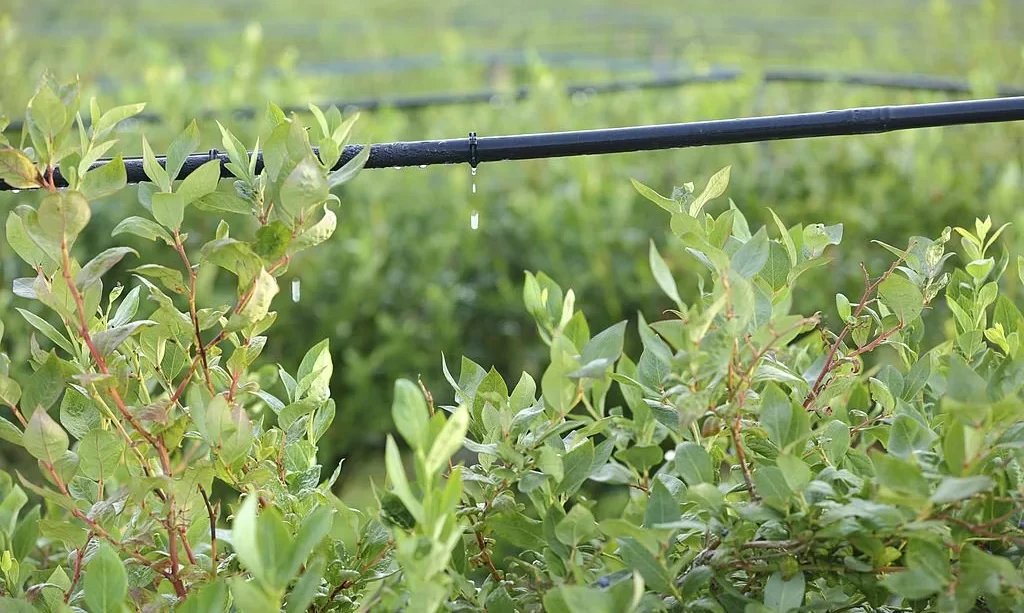Blueberries, with their sweet-tart flavor and numerous health benefits, have earned a cherished place in gardens and kitchens around the world. These small, flavorful fruits are not only delicious but also packed with antioxidants and vitamins, making them a popular choice for home cultivation. However, to reap the rewards of a bountiful blueberry harvest, understanding the water needs of these plants is essential.
In this article, we’ll dive into the world of blueberry cultivation and explore the critical role that water plays in their growth and development. From the basics of blueberry water requirements to the nuances of watering techniques, we’ll uncover the secrets to nurturing healthy and productive blueberry bushes.
- A Natural fertilizer blended especially for acid lovers such as rhododendrons, azaleas, camellias, hydrangeas, evergreens, blueberries, raspberries, strawberries, potatoes and other plants that need a low pH
- To encourage lush flowers and fruit, apply Acid Mix in early spring for vegetative growth and again when blooms appear.
- Fall Applications can help promote root growth and boost resistance to extreme winter temperatures
- 5 pound box
- 4-3-6 formula
Blueberry Water Needs
Before we delve into the specifics of watering blueberries, it’s essential to grasp the foundational principles of their water requirements:
- Soil Moisture: Blueberries thrive in consistently moist soil. Unlike some plants that prefer to dry out between waterings, blueberries perform best when their root zone remains consistently damp but not waterlogged.
- Climate Factors: The climate in which you grow your blueberries greatly influences their water needs. In regions with hot, dry summers, more frequent watering may be necessary to combat drought stress. Conversely, in cooler and more humid climates, you may need to adjust your watering schedule accordingly.
- Growth Stages: The water needs of blueberry plants vary during different growth stages. Newly planted blueberries require more attention to establish their root systems, while mature bushes need consistent moisture to support fruit production.
By gaining a solid understanding of these fundamental aspects of blueberry water needs, you’ll be better equipped to tailor your watering practices to the specific conditions of your garden, ensuring a flourishing blueberry harvest.
Establishing the Right Watering Schedule
Once you’ve grasped the basics of blueberry water requirements, the next step is to establish an appropriate watering schedule. Here’s how to go about it:
- Growth Stage Consideration: Recognize that different growth stages demand varying levels of moisture. Newly planted blueberry bushes need consistent moisture to establish their root systems. During the fruit-bearing stage, maintaining a steady water supply is crucial for plump and juicy berries.
- Frequency and Depth: Aim for a watering schedule that provides a consistent level of moisture in the root zone. It’s often better to water deeply and less frequently rather than with shallow, frequent watering. This encourages deep root development and helps blueberry plants withstand drought stress.
- Morning Watering: Opt for morning watering whenever possible. This allows the foliage to dry before evening, reducing the risk of fungal diseases. Avoid late afternoon or evening watering, as it can create a moist environment conducive to disease development.
- Blueberry Fertilizer for Acid Loving and Edible Plants
Soil and Drainage
The composition of your soil and its drainage capacity significantly impact blueberry water management:
- Soil Type: Blueberries thrive in well-draining, acidic soil. Understanding your soil type and its pH level is essential. Amending your soil to meet the preferred pH range for blueberries (around 4.5 to 5.5) ensures optimal nutrient uptake and water retention.
- Drainage: Proper soil drainage is crucial. Blueberry roots are sensitive to waterlogged conditions. If your soil has poor drainage, consider raised beds or container gardening to control moisture levels. Amending soil with organic matter like compost can also improve both drainage and moisture retention.
- Mulching: Applying a layer of organic mulch, such as pine straw or wood chips, around blueberry bushes helps maintain soil moisture and temperature. Mulch acts as a natural moisture regulator, reducing water loss through evaporation.
Watering Methods and Techniques
Selecting the right watering methods and techniques can make a significant difference in how effectively blueberries receive moisture:
- Drip Irrigation: Drip irrigation is an efficient way to deliver water directly to the root zone, reducing water wastage and the risk of foliage diseases. It provides consistent moisture without wetting the leaves.
- Soaker Hoses: Soaker hoses are another excellent choice for precise root-zone watering. They release water slowly, allowing it to penetrate the soil deeply.
- Mulch Application: Applying a layer of mulch around blueberry plants not only conserves moisture but also helps maintain a more consistent soil temperature. This is particularly beneficial during hot summer months.
- Rain Gauges: Install rain gauges in your garden to monitor rainfall. This information helps you adjust your watering schedule based on natural precipitation.
By mastering these watering methods and techniques, you can ensure that your blueberry bushes receive the right amount of moisture in the most efficient and effective manner. Proper water management is the key to nurturing healthy blueberry plants and enjoying a bounty of delicious berries each season.
Signs of Overwatering and Underwatering
Recognizing the signs of overwatering and underwatering in your blueberry plants is crucial for maintaining their health:
- Overwatering Signs: Watch for symptoms such as wilting, yellowing leaves, and a decline in overall plant vigor. Excess moisture can lead to root rot and fungal diseases. If the soil consistently feels waterlogged or soggy, you may be overwatering.
- Underwatering Signs: If blueberry plants are not receiving enough moisture, they may display symptoms like leaf wilting, browning leaf edges, and reduced fruit production. The soil around the roots may become dry and dusty. It’s essential to provide adequate water to prevent drought stress.
Watering Considerations for Container-Grown Blueberries
Growing blueberries in containers is a popular option, and they have specific watering needs:
- Container Selection: Choose a container that provides ample space for root growth and has drainage holes. Containers made of materials like terracotta or plastic help retain moisture.
- Potting Mix: Use a high-quality potting mix designed for acid-loving plants. This mix provides good drainage while retaining necessary moisture.
- Watering Frequency: Container-grown blueberries may require more frequent watering than those planted in the ground. Check the soil moisture regularly by inserting your finger into the soil. Water when the top inch feels dry to the touch.
- Fertilization: Container blueberries also benefit from regular fertilization. Use a balanced, slow-release fertilizer to provide essential nutrients.
Conclusion
Understanding and mastering the art of watering blueberries is a key factor in the success of your blueberry garden. With the right knowledge, you can ensure that your blueberry plants receive the ideal amount of moisture, promoting robust growth and abundant fruit production.
As you navigate the intricacies of blueberry water management, remember that it’s a dynamic process that requires attention to changing weather conditions, growth stages, and soil conditions. By recognizing the signs of overwatering and underwatering and adjusting your watering practices accordingly, you can maintain the health and vitality of your blueberry bushes.
Whether you’re growing blueberries in the ground or in containers, the principles of proper watering remain the same—consistent moisture, well-draining soil, and attention to the unique needs of these delightful fruit-bearing shrubs. As you apply these principles, you’ll be rewarded with a bountiful harvest of sweet, plump blueberries to savor and share with family and friends, making all your efforts in the garden truly fruitful.






